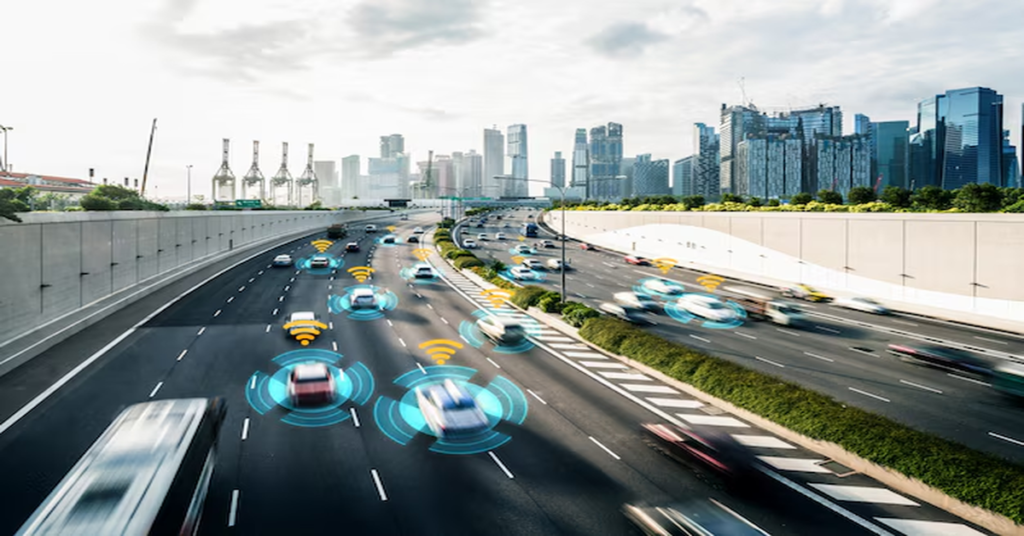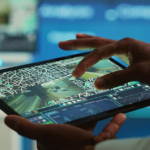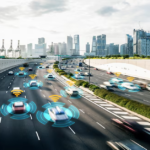In an era marked by rapid innovation, the term “Technology Drive” symbolizes the relentless push toward progress and transformation across various industries. Technology drives change, enabling advancements in healthcare, transportation, communication, education, and countless other sectors. This revolution impacts every aspect of daily life, offering unprecedented convenience, efficiency, and opportunities for growth.
This comprehensive article explores how technology drives modern society, focusing on its evolution, applications, challenges, and future potential. The guide includes six frequently asked questions to address common inquiries about the role of technology in contemporary life.
1. The Evolution of Technology
1.1 Early Innovations
Technology’s journey began with simple tools, evolving from the invention of the wheel to the discovery of electricity. Each milestone laid the foundation for subsequent innovations, shaping human civilization.
1.2 The Digital Revolution
The late 20th century witnessed a technological explosion with the advent of computers, the internet, and mobile devices. These innovations redefined how people work, communicate, and access information.
1.3 Current Technological Landscape
Today, technology drives progress through artificial intelligence (AI), blockchain, 5G networks, and renewable energy solutions. These advancements are transforming industries and enhancing the quality of life.
2. Technology’s Impact on Key Industries
2.1 Healthcare
Technology has revolutionized healthcare with innovations like telemedicine, wearable devices, and AI-driven diagnostics.
- Telemedicine: Provides remote consultations, improving accessibility for patients in rural areas.
- Wearable Health Tech: Devices like smartwatches monitor vital signs in real-time.
- AI in Diagnostics: AI algorithms detect diseases with high accuracy, facilitating early intervention.
2.2 Education
Technology drives educational advancements through e-learning platforms, virtual classrooms, and AI-driven personalized learning.
- Online Learning: Platforms like Coursera and Khan Academy offer flexible learning options.
- Virtual Reality (VR): Provides immersive learning experiences.
- AI Tutors: Customize learning plans to suit individual student needs.
2.3 Transportation
Technology enhances transportation efficiency and safety.
- Electric Vehicles (EVs): Reduce carbon emissions and promote sustainability.
- Autonomous Cars: Improve road safety with advanced sensors and AI systems.
- Hyperloop Projects: Aim to revolutionize long-distance travel with high-speed transport solutions.
2.4 Communication
Technology enables seamless global communication.
- 5G Networks: Offer faster internet speeds and improved connectivity.
- Video Conferencing Tools: Platforms like Zoom facilitate remote work and virtual meetings.
- Social Media: Connects people across the globe, fostering real-time interaction.
3. Emerging Technologies Driving the Future
3.1 Artificial Intelligence and Machine Learning
AI and machine learning are at the forefront of technological advancements.
- Smart Assistants: Devices like Alexa and Siri enhance daily tasks.
- AI in Healthcare: Assists in drug discovery and patient care.
- Autonomous Systems: Power self-driving cars and automated drones.
3.2 Blockchain Technology
Blockchain offers decentralized solutions for various industries.
- Cryptocurrency: Provides alternative financial systems.
- Supply Chain Management: Enhances transparency and traceability.
- Smart Contracts: Automate agreements without intermediaries.
3.3 Internet of Things (IoT)
IoT connects devices, enabling smarter environments.
- Smart Homes: Automate lighting, security, and appliances.
- Wearable Tech: Tracks fitness and health metrics.
- Industrial IoT: Optimizes manufacturing and logistics processes.
3.4 Renewable Energy Technologies
Technology drives the shift toward sustainable energy sources.
- Solar Power Innovations: Improve efficiency and affordability.
- Wind Energy Developments: Expand renewable energy capacity.
- Energy Storage Solutions: Enhance grid reliability with advanced batteries.
4. Challenges in Technological Advancement
4.1 Ethical Considerations
- AI Bias: Algorithms can reflect societal biases.
- Privacy Concerns: Data collection raises privacy issues.
- Job Displacement: Automation impacts employment in certain sectors.
4.2 Cybersecurity Threats
- Data Breaches: Target sensitive information.
- Phishing Attacks: Exploit human vulnerabilities.
- Ransomware: Holds data hostage for financial gain.
4.3 Technological Divide
- Access Disparities: Not all communities have equal access to technology.
- Digital Literacy: Lack of skills hinders technology adoption.
- Infrastructure Gaps: Developing regions face connectivity challenges.
5. The Role of Technology in Sustainable Development
5.1 Environmental Protection
- Smart Agriculture: Uses IoT to optimize farming practices.
- Pollution Monitoring: Employs sensors to track environmental quality.
- Green Technologies: Reduce ecological footprints.
5.2 Economic Growth
- Innovation Hubs: Foster startups and technological innovation.
- E-Commerce Expansion: Boosts global trade and local businesses.
- Remote Work: Increases productivity and work-life balance.
5.3 Social Impact
- Digital Inclusion: Promotes equal access to technology.
- Health Initiatives: Improves healthcare delivery in underserved areas.
- Educational Programs: Bridge knowledge gaps with technology-driven solutions.
6. The Future of Technology Drive
6.1 Quantum Computing
Quantum computers promise to solve complex problems beyond the capabilities of classical computers.
- Faster Processing: Accelerates data analysis.
- Cryptography Advances: Enhances security protocols.
- Scientific Research: Aids in solving global challenges.
6.2 Space Exploration Technologies
Technology drives advancements in space exploration.
- Reusable Rockets: Reduce space travel costs.
- Mars Missions: Explore potential for human settlement.
- Satellite Technology: Improves global communications.
6.3 Biotechnology Innovations
Biotechnology integrates with technology for medical breakthroughs.
- Gene Editing: CRISPR technology treats genetic disorders.
- Personalized Medicine: Tailors treatments to individual genetic profiles.
- Vaccination Technologies: Accelerate vaccine development and distribution.
Conclusion
Technology drives progress, shaping the modern world in ways previously unimaginable. From enhancing healthcare and education to revolutionizing transportation and communication, technological innovations continue to redefine how people live and work. While challenges exist, including ethical concerns and access disparities, the potential for technology to drive positive change remains unparalleled.
As society moves forward, embracing technological advancements responsibly and inclusively will be crucial. By fostering innovation, promoting digital literacy, and ensuring equitable access, the technology drive can benefit all, paving the way for a brighter, more connected future.
FAQs
1. How does technology drive innovation in healthcare?
Technology enables remote consultations, AI-driven diagnostics, and personalized treatments, improving patient care and accessibility.
2. What are the risks associated with technological advancements?
Risks include data privacy concerns, cybersecurity threats, and potential job displacement due to automation.
3. How can technology promote sustainability?
Innovations like smart agriculture, renewable energy, and pollution monitoring help protect the environment and conserve resources.
4. What is the digital divide, and how can it be addressed?
The digital divide refers to unequal technology access. Addressing it requires improved infrastructure, digital literacy programs, and affordable technology solutions.
5. How does artificial intelligence drive technological progress?
AI enhances automation, data analysis, and decision-making across industries, leading to increased efficiency and innovation.
6. What role does technology play in future space exploration?
Technology enables cost-effective space travel, improved satellite communications, and exploration of potential human settlements on other planets.
Final Thoughts
The technology drive is an unstoppable force reshaping every facet of modern life. By embracing innovations responsibly and inclusively, society can harness technology’s full potential to solve global challenges, enhance quality of life, and drive sustainable development for future generations.







